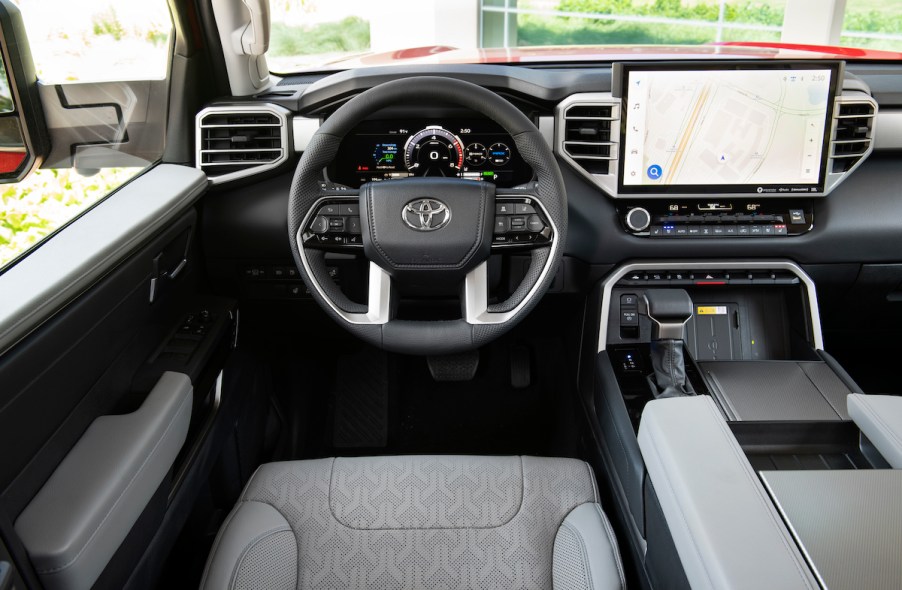
What Is Fit and Finish on a Car?
Every field has its share of specialized terms. And the auto industry is no different. Sometimes auto jargon seeps into commercials and conversations. We act as if we know them when we’re really not quite sure. But if you’re slightly embarrassed about it, don’t be. More people than you think don’t know what parts like brake calipers do or what specific maintenance terms are. Perhaps the phrase “fit and finish” is one you’re not entirely clear on. Here’s what it means as it relates to cars and trucks.
What is fit and finish?
At first glance, you might feel that the phrase’s definition should be obvious, as the two nouns are pretty simple. But the meaning can’t be easily gleaned from a literal interpretation of the words. Fit and finish refer to how aesthetically appealing a car is in terms of how well the parts are placed and aligned, as per New Roads Automotive Group.
Excellent fit and finish can be seen in a vehicle in several ways. A vehicle with doors that close precisely and tightly, has a smooth paint job, firm upholstery, and precision trimmings, among other characteristics, is said to have excellent fit and finish. Torque News notes the term measures the craftsmanship and quality of a vehicle and, more broadly, of vehicles of a particular model year.

Luxury automakers use superior fit and finish as a selling point. BMW, Lexus, and Mercedes-Benz marketing often focus on the craftsmanship and amenities in these vehicles. And even affordable brands like Hyundai, Toyota, and Volvo, are well-known for selling models with excellent fit and finish.
Indeed, this attribute can make or break a car sale. Many prospective buyers who notice a vehicle’s poor fit and finish during their test drive will choose a different option.
Can fit and finish affect performance?
When prospective buyers opt for vehicles without obvious fit and finish issues, they often worry that these cosmetic issues may indicate poor mechanical quality. After all, if the vehicle appears designed with an apparent lack of attention to detail, it isn’t much of a stretch to wonder if there might be similar imperfections in crucial components like the engine and suspension.
However, generally, fit and finish issues are cosmetic. You typically won’t find that crooked decals are a sign of significant engine problems. It’s also unlikely that you’ll face a higher risk of recalls or higher maintenance costs in the long run because of a sloppy paint job.
Most importantly, major vehicle component issues are usually identified pretty quickly by consumers and manufacturers, the latter of whom will generally order a recall on their own. If they don’t issue a recall for a malfunction that presents a potential safety risk. Then the National Highway Traffic Safety Administration will do so after investigating and substantiating complaints instead.
Keep an eye out for poor fit and finish during your next test drive
So what are some examples of poor fit and finish? There are quite a few, as detailed in one recent Reddit thread. A vehicle with misaligned panels, audible noises from poorly installed and upholstered seats, wind noise from a window or sunroof gap, and crooked badging has a bad fit and finish. Depending on whether the issue was disclosed at the sale or is challenging to repair, a fit and finish issue may qualify a buyer for compensation under lemon laws, as per The Consumer Law Group.
Some automakers like Tesla have developed a reputation for poor fit and finish. Car reviewers from Car and Driver to Consumer Reports (and even amateur reviewers on TikTok and The Byte) have found build quality issues with test vehicles for years. Tesla models have been plagued with poor paint jobs to door, liftgate, and panel alignment issues. Even Elon Musk has noted these fit and finish issues, which are surprising for an automaker with Tesla’s reputation.
And in Tesla’s case, build quality issues aren’t having a significant impact on sales. But for other automakers and brands, especially emerging ones, fit and finish problems can be a disaster. Further, while fit and finish problems don’t necessarily signal mechanical issues, they can cause real problems. For example, as per How Stuff Matters, misaligned windows could mean water damage the next time it rains. And obvious cosmetic issues will likely make it harder to sell your car or get as much as you’d want in an eventual sale or trade-in.
So, keeping an eye out for fit and finish issues when buying a vehicle is important. When you choose between and without these issues, it’s a good bet to opt for the latter.


